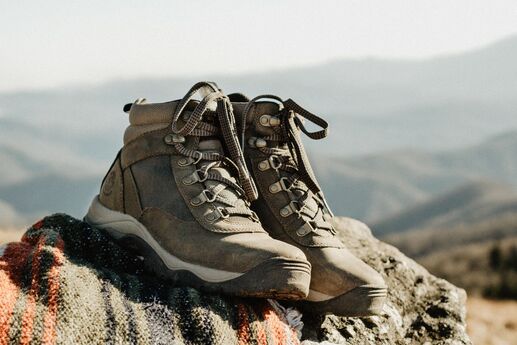Extreme Apparel for Outdoorsmen

Whether you’re trekking the Appalachian Trail or hitting the Amazon Basin for some synchronized swimming with piranha, what you wear plays a major part in your comfort and -- in adorably extreme circumstances -- your survival.
Clothing technology has come a long way since explorer Robert Scott ended up on the frozen foods menu on his trip to the South Pole in the early 1900s. If he was here today, he’d be really old … and he’d tell you how awesome modern, durable, high-tech, waterproof, laminate Gore-Tex jackets with synthetic fabrics are. They all allow perspiration to escape from the inside, and repel wind and water on the outside.
“Anything that helps keep your skin dry will keep you comfortable, no matter what temperature you want to operate at,” says Kim McKersie, a New Jersey-based outdoor apparel expert.
But despite these advances in synthetic fabrics, a classic natural alternative is still a mainstay in contemporary outdoor and adventure apparel.
“Wool is back in a big way,” says McKersie, who says Merino wool is optimal as a base-layer garment because it’s naturally antibacterial, and the latest generation of wool products (made by companies like Icebreaker, SmartWool and Ibex) and are softer to the touch than what people are accustomed to. “Pick up Smartwool’ s NTS (Next-to-Skin) Lightweight Crew at $70.00 for colder environments, and their Microweight Tee for $60.00 for more moderate climates,” says McKersie.
Tiered Cold-weather Protection
While most people know that layering is the most effective way to stave off the elements, McKersie says that they don’t realize that each layer offers a specific function. This comprehensive three-layer system is commonly used in most of today’s hiking and adventure outfits:
The Base: This layer’s primary purpose is to move moisture away from your skin so that it can evaporate. High-tech, man-made fabrics (like Polartec Powder Dry and Capilene) along with Merino wool and silk are the most effective fabrics for this purpose. McKersie suggests Terramar’s Body-Sensors Helix shirt -- made of micro denier polyester -- for $30.50, or their Filament Jersey Silk shirt for $46.50. Each is comfortable in both cooler and warmer conditions.
The Insulation: The next layer traps heat around your body. Versatile wool also works well here, along with goose down and synthetic fleece. McKersie suggests Smartwool’s 100-percent Merino wool Roundabout Crew sweater, $85, for light to moderate insulation. For moderate to heavy insulation, she recommends The North Face’s Denali Jacket made from Polartec 300 series synthetic fleece for $165.00 to $185.00. For those of you who enjoy sunning with the seals on the polar ice cap, she recommends Mountain Hardwear’s Phantom 800-fill goose down jacket for $250.00.
The Surface: McKersie has her favorite outerwear choices to keep out the cold air and points her cold weather vane at Marmot’s Palisades Jacket made with Gore-Tex for $285.00, and Outdoor Research’s Revel Jacket made with Pertex Shield for $165.00.
Where to Wear
You wouldn’t want to be caught dead in the wrong outfit in extreme elements -- which is exactly what could happen if you pick the wrong outfit. So don’t sweat it; just consider humidity and altitude when assembling your attire:
Jungle Rooms: “In a hot, humid climate like the rainforest, I recommend garments that offer lighter-weight, tightly woven fabrics with a looser fit,” says McKersie. “Try ExOfficio’s quick-drying Dryfly Flex Long-sleeve Shirt,” for $80.00. You’ll also want to check out Columbia’s Long-sleeve Silver Ridge shirt, which offers a sun-protection fabric and Omni-Wick advanced evaporation technology built right in for $50.00. “As you walk,” she continues, “you get a billowing effect, allowing your perspiration to escape.”
Desert Climates: For dry, arid conditions, McKersie also recommends loose fits like Mountain Hardware’s quick-drying Canyon Short-sleeve Shirt with an Ultra Violet Protection Factor (UPF) of 30 for $50.00, as well as their Mesa convertible pants with UPF sun protection of 50, for $75.00. The pants can be unzipped at the thigh for warmer temperatures.
Mountain Ranges: If you’re looking to attain altitude, McKersie advises using a wool-base layer using SmartWool’s NTS Midweight Crew for $75.00. “Add additional layers as needed,” he says. “Try Mountain Hardware’s Microchill Jacket, $85.00, or The North Face’s TKA Microvelour Glacier sweater, $50.00, and then top everything off with a lightweight, breathable laminate jacket.
So there you have it: all the fashion advice for today’s man about town … if that town happens to be either in the Himalayas or the Mekong Delta. Dress well my friends, or remember to disconnect your cable before you go.
Photo by Joanna Nix-Walkup on Unsplash



